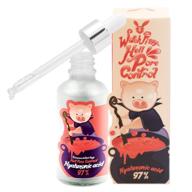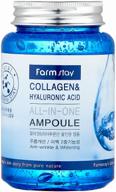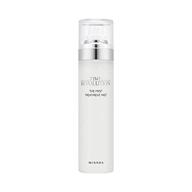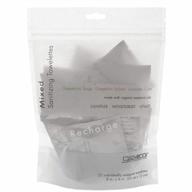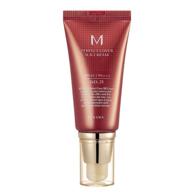Top products in 💄 Face Makeup
Choosing the Right Foundation for Your Skin Type
Finding the perfect foundation that matches your skin type and tone can be a challenge. With so many formulas and finishes available, how do you know which one is right for you? This guide will help you understand your skin type and determine what foundation texture and coverage is best.
Determine Your Skin Type
The first step is figuring out if you have dry, oily, combination, normal or sensitive skin. Here are the characteristics of each skin type:
- Dry skin - Flaky, rough texture. Tight feeling. Fine lines and wrinkles.
- Oily skin - Shiny appearance, especially T-zone. Large pores. Acne-prone.
- Combination skin - Oily T-zone, dry cheeks. Enlarged pores and shine in T-zone.
- Normal skin - Even texture. Minimal flaws and pores. Not overly oily or dry.
- Sensitive skin - Easily irritated. Redness and flushing.
Choose a Foundation Formula
Once you know your skin type, you can determine what foundation formula will work best:
| Skin Type | Best Foundation Formulas |
|---|---|
| Dry | Cream or liquid hydrating formulas |
| Oily | Mattifying or oil-free liquids or powders |
| Combination | Powder-finish liquid formulas |
| Normal | Lightweight liquids or powders |
| Sensitive | Mineral powder or hypoallergenic liquid |
Consider Coverage Level
The amount of coverage you need is also important. Here are the main categories:
- Sheer - Evens tone, covers minimal flaws.
- Light - Covers minor imperfections and redness.
- Medium - Covers more pronounced imperfections and discoloration.
- Full - Conceals major flaws, hyperpigmentation, acne.
Full coverage foundations often work best for oily and combination skin. Dry and normal skin usually look best with light to medium coverage.
Understand Finishes
Finish determines how the foundation looks on your skin:
- Matte - Controls shine, hides pores. Flat, non-reflective appearance.
- Natural or satin - Soft luminosity. Skin-like look.
- Dewy or luminous - Radiant, hydrated appearance.
Oily skin benefits from an oil-controlling matte finish. Dry and normal skin can wear any finish, but dewy options add glow. Determine your own preference!
Finding the Best Shade Match
Testing foundations at your jawline in natural lighting helps determine an ideal match. The right shade will disappear into your skin. Avoid shades that are too light, dark, yellow or pink. Ask for samples when possible.
Choosing a foundation tailored for your skin's needs will help you achieve a flawless, natural looking complexion. Be sure to prep and moisturize skin properly before application as well!
Matching Your Complexion - How to Find the Perfect Shade
Finding a foundation that is a perfect match for your complexion can be difficult with so many brands and formulas to choose from. Here are some tips to help you accurately match your skin's undertones and find the ideal shade:
Determine Your Undertones
Understanding undertones is key for proper shade matching. Undertones are the hues that come through your skin from underneath its surface. There are three main categories:
- Warm - golden, yellow, peach
- Cool - pink, red, blue
- Neutral - mix of warm and cool
Here are some ways to determine your undertones:
- Veins - Blue = cool, green = warm
- Jewelry - Gold flatters = warm, Silver flatters = cool
- Red lipstick test - Warm skin makes red lips pop, cool skin washes it out
Compare Shades in Natural Light
Always test foundation shades on your jawline or cheek in natural daylight. Artificial lighting can distort shades. Here are some tips for testing:
- Start with 3-4 shades that match your depth and undertone
- Apply a dime-sized amount and blend out
- Judge how it looks as it dries - you want it to disappear into your skin
- Don't rely on first application - wear for a few hours if possible
Consider Oxidation
Many foundations will oxidize and darken after application. This happens more with liquid formulas. If you notice oxidation, go a shade lighter than what initially matches.
Sample and Ask for Help
Get samples whenever possible to test shades thoroughly at home. Ask makeup counter artists for assistance - describe your skin and its nuances to help them make an informed recommendation. Be sure to mention:
- Skin type and tone
- Undertone details
- Any issues like redness, acne scarring, etc.
How Lighting Affects Foundation Shade
The lighting you're in can alter how a foundation shade looks. Here's what to watch out for:
| Lighting | Effect on Shade Matching |
|---|---|
| Natural daylight | Provides the most accurate representation of a shade match. Go by this lighting whenever possible. |
| Warm indoor lighting | Can make foundations look more yellow and darker than they actually are. |
| Cool fluorescent lighting | Can make foundations look paler and more pink than they really are. |
Tips for Darker Skin Tones
Those with deeper complexions can have a harder time finding an accurate match. Here are some tips:
- Look at boutique brands that cater to wider ranges of skin tones.
- Ask about a brand's shade extensions that go beyond typical ranges.
- Mixing foundations can help you customize your perfect match.
- Use a richer moisturizer to avoid chalky, ashy foundation results.
With the right techniques and by understanding your skin's nuances, you can find a foundation shade that seamlessly melts into your complexion.
Achieving a Flawless Canvas - Primer, Concealer and Setting Spray Explained
A smooth, flawless makeup canvas allows you to achieve the perfect finished look. Using primer, concealer and setting spray properly helps create an ideal base for all your other makeup.
The Role of Primer
Primer creates the ideal surface for foundation application. It smooths texture, fills pores and allows makeup to glide on seamlessly. Here are some key benefits of primer:
- Extends foundation wear time
- Controls oil and shine
- Minimizes the look of pores
- Reduces the appearance of fine lines
- Creates a smooth, even canvas for makeup
Using a primer compatible with your skin type is important. Here are some popular options:
| Skin Type | Primer Recommendations |
|---|---|
| Dry | Hydrating primers |
| Oily/Acne-prone | Mattifying or oil-controlling primers |
| Dullness/Sallowness | Illuminating or brightening primers |
| Fine Lines/Wrinkles | Smoothing or filling primers |
| Enlarged Pores | Blurring primers |
Choosing the Right Concealer
Concealer hides imperfections for an airbrushed look. Consider coverage level and formula based on your needs:
- Sheer: Minimal coverage for slight discoloration
- Light: Covers minor redness and spots
- Medium: Conceals moderate flaws and undereye circles
- Full: Maximum coverage for major imperfections and hyperpigmentation
Creams offer buildable coverage and hydration. Liquids provide lightweight, natural looking coverage. Sticks are ideal for spot concealing. Look for moisturizing options if you have dry skin or fine lines. Those with oily skin should use mattifying or oil-controlling formulas.
Lock in Makeup with Setting Spray
Setting spray is the final step for lasting makeup that stays put. Benefits include:
- Prevents fading, transferring and smudging
- Sets cream and powder products in place
- Reduces shine and controls oil
- Refreshes makeup and hydrates skin
Options like matte or oil-control work best for oily skin. Dry skin benefits from hydrating setting sprays with ingredients like hyaluronic acid. Avoid alcohol-based sprays if you have dryness.
Use primer, concealer and setting spray according to your skin’s needs for a smooth, flawless canvas allowing your makeup to look picture-perfect.
Contouring and Highlighting for Beginners - Sculpt and Illuminate Your Features
Contouring and highlighting are makeup techniques that allow you to enhance and define your facial structure. Contouring uses shadow and depth to sculpt the face, while highlighting brightens and illuminates. Here is a beginner’s guide to mastering these transformative techniques.
Choosing Contouring Products
Cool-toned bronzers and powders mimic natural shadow to create contour. Options include:
- Contour palettes
- Single pressed powders
- Cream contour sticks
Look for matte formulas in shades like taupe or ash brown. Shimmery bronzers warm up the complexion rather than define.
Placement for Contouring
Apply contour in the hollows of the cheeks, along the temples, jawline and sides of the nose. Blend onto the hairline as well. Here are some contouring techniques for different face shapes:
| Face Shape | Contouring Placement |
|---|---|
| Round | Hollows of cheeks and temples |
| Square | Temples, jawline and hairline |
| Oval | Lightly under cheekbones |
| Heart | Sides of forehead and jawline |
Choosing a Highlighting Product
Lightweight, luminous formulas work best to highlight. Options include:
- Powder highlighters
- Liquid highlighters
- Illuminating primers
Look for champagne, gold or pearlized shades. Apply sparingly - you want a subtle glow.
Placement for Highlighting
Highlight the high points of your face - tops of cheekbones, bridge of nose, cupid’s bow, brow bones and inner corners of eyes. Chin and forehead can be highlighted as well.
Blending is Key
Always blend, blend, blend! Buffing and softening the edges of contour and highlight creates a seamless, natural look. Use a beauty sponge, contour brush or buffing brush to blend.
Start slowly when trying new contouring and highlighting techniques. Build up product gradually for a sculpted glow that enhances your best features.
Eyeshadow Palettes - Create Daytime, Evening and Special Occasion Looks
Eyeshadow palettes allow you to experiment with endless looks for any occasion. Having a variety of shade finishes and tones to work with makes creating everything from natural daytime eyes to dramatic evening glam easy. Here are tips for getting versatile use from your palette.
Choosing a Palette
Look for palettes with a mix of finishes - mattes, shimmers, satins, metallics. Varied tones and depths are key too - light highlights, mid-tone crease shades, deep liners. A palette with 10-15 shades gives you many options. Consider your eye color as well when choosing shadows.
- Warm brown, plum and peach tones flatter blue eyes
- Greens and purples make hazel and green eyes pop
- Cool tones like mauve, taupe and gray bring out brown eyes
Daytime Neutrals
For a simple daytime eye, use mid-tone matte shadows across the lid and in the crease. Softer satins work too. Blend the edges well and use a highlighting shimmer shade on the inner corners and brow bone. Keep lower lashline bare.
Daytime Color Pops
For more color during the day, try brighter mattes on the lid paired with a neutral crease shade. Or use a shimmery metallic shade just on the center of the lid. Soften the edges well. Keep the upper and lower lashlines clean for a bright, fresh look.
Everyday Smokey Eyes
A lighter smoky eye is perfect for everyday wear. Use a mid-tone matte shade all over the lid and sweep a soft dark brown into the crease and outer corners. Blend a shimmery champagne on the inner corners. Line just the upper lashline and lightly smudge with shadow.
Bold Evening Looks
Use deep shades to create an intense evening eye. Try a bold metallic shade across the lid, a deep matte in the crease, and a shimmery dark shadow on the outer corners. Line both upper and lower lashlines and blend the lower shadow outwards. Finish with mascara, false lashes and liner if desired.
Special Occasion Glam
Go all out for events with glittery shades! Press a shimmery shadow across the lid, then layer a sparkling loose pigment on top. Deepen with crease and liner shades. Try different shadow placement like halo eyes. Don't forget highlights on the inner corner and brow.
Palette Tips and Tricks
Use these tips to maximize your palette:
- Play with shade arrangements and color combos
- Use shadows dry or wet for varied effects
- Layer metallics over other shades
- Use shimmers lightly - a little goes a long way
- Mix textures like matte, shimmer, glitter, etc.
With the right techniques and an arsenal of shade options, you can achieve any eye look for any occasion using one versatile eyeshadow palette.
Lips - Picking the Perfect Lipstick, Lip Gloss and Lip Liner for You
With so many lip color options out there, from creams to stains to glosses, finding your perfect shades and formulas can be daunting. Here are some tips on choosing lipsticks, glosses and liners tailored just for you.
Find Your Perfect Lipstick
Consider finish, coverage and tone when picking lipsticks:
- Finish - Creams are classic and hydrating. Mattes are bold and smooth. Satins are lightweight with subtle sheen. Metallics add mirror-like shine.
- Coverage - Sheer for a hint of color. Medium for solid coverage with some natural lip coming through. Full for opaque, boldest color.
- Tone - Blues and cool pinks brighten paler complexions. Peaches and corals complement medium skin. Deep berries and burgundies suit darker skin.
Test shades on your hand first to assess tone - some colors pull differently once applied to lips.
Make Lip Gloss Work For You
There are so many gloss options, but focus on these qualities:
- Finish - Shimmers add flash. Frosts are bold and reflective. Creams are more natural.
- Consistency - Thinner for sheerer color. Thick for high shine and intensity.
- Moisturizing - Look for nourishing ingredients if lips tend to be dry.
Apply gloss to the center of lips over lipstick for dimension. Use alone for sheer, wet-look shine. Find shades that complement your natural lip color.
Lip Liner Makes a Difference
Liners define the lips and prevent feathering. Use a liner close to your natural lip shade, or slightly darker or lighter to alter shape and size. Here are some liner techniques:
- Line outside the lips to enlarge and add fullness.
- Line just the outer edges of lips for definition.
- Fill in lips completely before applying color for staying power.
- Use liner on top of lipstick for touch-ups.
Always blend liner into lip color so edges aren't harsh. Softer pencil liners are easier to work with.
Other Tips for Lipstick Success
- Prep lips first by exfoliating and applying balm.
- Look for hydrating or moisturizing formulas if lips are dry.
- Use a lip brush for precise application if needed.
- Apply a light layer of translucent powder before lipstick to help it adhere.
Find colors, formulas and application techniques that make your lips look their best.
What is the Benefit of Amazon Prime when Buying Face Makeup?
Amazon Prime provides a variety of benefits that can enhance your experience when buying face makeup online. The premium membership gives you access to features that make shopping for cosmetics convenient and cost-effective.
Free Two-Day Shipping
One of the biggest perks of Amazon Prime is free two-day shipping on eligible items. When you need to restock basics like foundation or want to try a new eyeshadow palette, you can get your face makeup quickly without paying extra shipping fees.
This perk allows you to order just one or two items at a time instead of waiting to build a large cart for free shipping minimums. For trendy or seasonal makeup you want right away, the fast free shipping is a major benefit.
Try Before You Buy
Amazon Prime members can use the Try Before You Buy program to test out select cosmetics before purchasing them. This is extremely useful when shopping for face makeup online.
You can try on shades of foundation, concealer, contour, eyeshadows and lip colors to see the true color payoff. This helps take the guesswork out of finding the right shades for your complexion.
Access to Exclusive Sales and Deals
Amazon Prime members get early access to exclusive Lightning Deals and Prime Day deals on makeup. You can take advantage of discounted prices on premium or prestige face makeup brands you might not normally splurge on.
There are also Prime-exclusive deals on makeup tools and beauty subscriptions. Overall, you get more opportunities to save on the face makeup products you love.
By being an Amazon Prime member, you can conveniently shop for all the latest face makeup while taking advantage of benefits like fast shipping and exclusive access to try-before-you-buy and daily deals. It makes keeping your cosmetic collection stocked easy.
What Are Some Common Mistakes To Avoid When Applying Face Makeup??
Here are some common mistakes to avoid when applying face makeup, based on the search results:
- Not prepping the skin properly: cleansing, toning, and moisturizing the skin before applying makeup is essential for a smooth and flawless finish.
- Applying makeup in the wrong lighting: natural light is the best for applying makeup, as it helps to ensure that the colors are true to life.
- Using too much concealer: applying too much concealer can make the under-eye area look cakey and creased.
- Applying makeup on dry skin: properly moisturizing the skin before applying makeup is crucial to avoid a dull, cracked, old, and tired look.
- Overdoing your eyebrows: filling in your eyebrows too heavily or using the wrong shade can make them look unnatural and overpowering.
- Not blending well: blending is key to achieving a natural and seamless look, so make sure to blend your makeup well.






